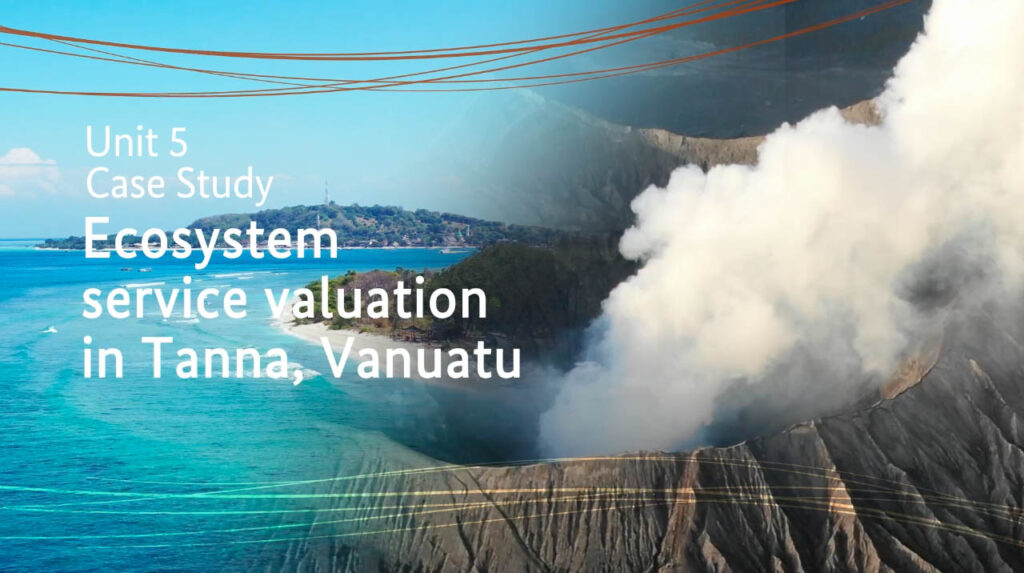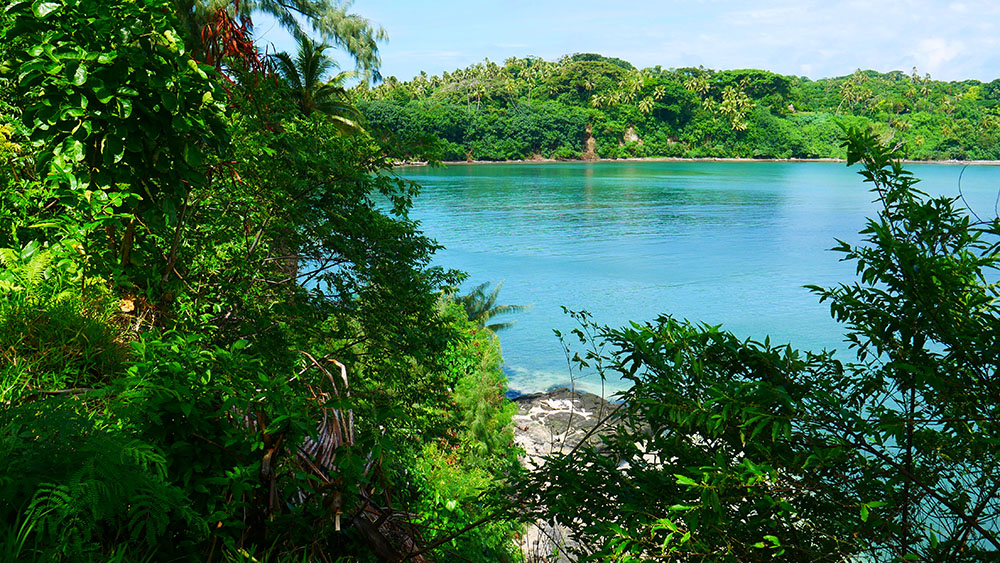
Pacific EcoAdapt
Ecosystem-based Adaptation to climate change
Adapting to a changing climate
Adaptation is the process in which adjustments are made in human or environmental systems to moderate adverse effects and take advantage of opportunities.
Although the Pacific region has a long history of resilience and adaptation to environmental variability, the rapidly changing climate is outpacing coping mechanisms. Pacific small island developing states (SIDSSIDS Small Island Developing States are a distinct group of 38 UN Member States and 20 Non-UN Members/Associate Members of United Nations regional commissions that face unique social, economic and environmental vulnerabilities.) are particularly vulnerable to climate change impacts, and with five of the world’s 47 recognised Least Developed CountriesLeast Developed Countries Least developed countries are a list of developing countries that, according to the United Nations, exhibit the lowest indicators of socioeconomic development, with the lowest Human Development Index ratings of all countries in the world. (LDCs) located in the Pacific: Kiribati, Tuvalu, Timor-Leste, Solomon Islands and Vanuatu. Factors such as small size, geographic isolation, ecological fragility, exposure to natural disasters, rapid population growth are further challenged by limited disaster mitigation capacity, development pressures and small economies.
A reliance on engineering and infrastructure solutions to these challenges is common. In the coastal zone for example, sea walls can be useful to address specific and localised problems related to sea level rise and storm surge, but this approach is limited and also contributes to loss, degradation and disruption of natural environments and processes that are already under pressure. And can have further impacts on the ability of communities to employ traditional social and cultural resilience mechanisms.
Ecosystem-based adaptation (EbAEbA Ecosystem-based adaptation - an adaptation approach to climate- and environmental-change which primarily deploys ecosystems and ecosystem functions to mitigate risks from hazards.)
The rapidly growing field of Ecosystem-based adaptation (EbA) has emerged from the recognition that ecosystems and livelihoods are interdependent. EbA involves the conservation, sustainable management and restoration of ecosystem and the use of ecosystem servicesecosystem services Ecosystem services are the goods and services provided by nature which are experienced as or transformed into benefits for human society. They are generally classed as 'provisioning' (material things that are consumed), 'regulating' (non-material benefits derived from habitat functioning), and 'cultural' (non-material benefits obtained from an experience of nature, including tourism)., which help people adapt to the impacts of climate change. EbA understands and harnesses the services provided by healthy and biodiverse ecosystems to increase resilience and reduce vulnerability to climate change.
In the Pacific, many communities are dependent upon services provided from forests, reefs and wetlands for food, shelter, clean water, medicines and practice of cultural traditions and ceremonies. Communities are central to EbA efforts, and thus can support cost-effective and locally and culturally relevant solutions to adaptation challenges.
Approaches to planning and decision making that employ EbA and resilience-thinking provide a significant opportunity for small island developing states, such as Vanuatu, to deal with climate change threats, while addressing other sustainable development challenges.
Supporting EbA however, is constrained by decision-makers knowledge of adaptation options and outcomes and requires comprehensive understanding of the local social, economic and ecological systems and their interactions with regional and global systems, from which informed decisions about planning and development can be made.
The Pacific EcoAdapt project aimed to generate a comprehensive knowledge base about climate change impacts on coastal ecosystems and the adaptation options in Pacific communities that can maintain or enhance existing ecosystem services as a foundation for healthy productive, and sustainable community development.
Above: How the economy and society are related to the environment.
Benefits of ecosystem-based adaptation in the coastal zone
- Provide natural defences to extreme weather events
- Reliable supply of fresh food and other natural resources for sustainable livelihoods
- Conservation of biodiversity
- Improved ecosystem services such as clean water and carbon storage
- Maintains “natural assets” for eco-tourism
- Helps nurture traditional bio-cultural culture including Traditional Knowledge (TK)

A spectrum of adaptation options are available in the coastal zone, from interventions that maintain or build ecosystem integrity through to pure engineering solutions.
Ecosystem-based adaptation as an integrated approach to climate adaptation
Early work in the EcoAdapt project focused on understanding EbA and deriving realistic examples of EbA interventions that can support sustainable and climate resilient communities on Tanna Island. This work included high level analysis of the successes and failures of EbA interventions throughout the Pacific and dovetailed into the work of the Microeconomics team via analysis of costs and benefits of adopting EbA.
Characterising how EbA interventions can support communities and livelihoods, across a wide range of scales (community, island, capital city and Nation) has been the focus over the latter years of EcoAdapt, with social ecological system (SES) modelling using Bayesian Network modelling techniques designed to evaluate how EbA interventions can impact community well-being. This work synthesises knowledge across all EcoAdapt theme areas to explore how adaptation interventions and climate change impacts will ultimately shape the livelihoods of community members through Vanuatu.
Decision makers often bring their different perspectives to adaptation planning based on their purpose and objectives or ‘entry points’ to the particular climate risks they are seeking to address. These entry points therefore frame the scope, activities and possible outcomes of any adaptation intervention considered. Four common entry points for adaptation are managing risks to:
- governance
- assets
- community and sustainable development
- ecosystems and species
Adaptation decision making at these different entry points may require different interventions. Development pathways will structure and re-shape the capacity of the people and the ecosystems to adapt and respond to climate change threats for generations to come. Some adaptation pathways that focus on the above points in isolation may modify the landscape leaving negative 'upstream' or 'downstream' legacies that are difficult or costly to change and reduce the opportunity for EbA, creating disconnections and loss of resilience in social ecological systems. The research demonstrated that EbA is often a low-cost option over the long-term (and often in the short-term) compared to engineering and infrastructure options, and provides multiple social and wellbeing benefits.
Further, the EcoAdapt research team’s thinking around EbA has led to a re-shaping of what constitutes EbA. Typically, EbA is considered as one of a range of adaptation options, one which harnesses ecosystem services to provide for humans. This option can be selected as an alternative to hard engineering and other options. As noted by many reviews of the limited success of EbA, however, considering EbA as an option limits its application. The EcoAdapt team has repositioned EbA not as an option, but as an approach to adaptation. This framing embodies a much broader range of actions and importantly, highlights the need to consider ecosystem services and employ socio-ecological systems thinking in all adaptation decision making contexts.
Adopting the ‘EbA as an approach’ philosophy can enable application of EbA to the range of different ‘entry points’, ensuring that ecosystem services and maintenance of ecosystem quality and connectivity are front and centre in all adaptation decision making contexts.
Publications
Journal publications about ecosystems and ecosystem-based approaches to climate change adaptation.






